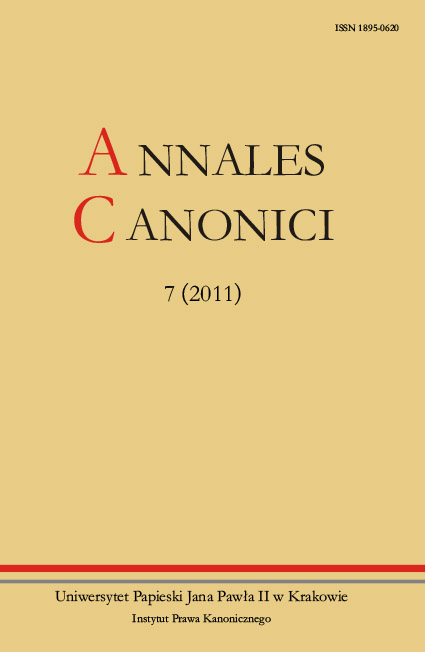The Significance of the Techniques of Encoding Canonical Norms in an Act of Law, CIC 1983 as an Example
DOI:
https://doi.org/10.15633/ac.0711Abstract
The problem of the techniques of encoding norms in legal articles, namely, condensation and division, is very important for legislators and interpreters as well. In CIC 1983 a lot of examples can be found of both techniques.
The legislator must not look only at the sentences he wrote and analyze their external wordy shape. He must go deeper and be imaginative enough to see how users of law in process of interpretation would get out the norms from the text, and what the norms would be. In this sense a legislator is the first interpreter of his law, even before promulgation of a law. During the process of drafting the law, he must try to foresee situations in which the norms from the canons would be interpreted and applied.
The interpreter, knowing that the norm he is trying to find can be encoded in many canons, is urged to know duly the whole system of law. He must also try to take out every possible norm which legislator encoded. The awareness of the problem of encoding norms in legal text and of the proper usage of the techniques of condensation and division can be of great help for church legislators and interprets in fulfilling their duties for the sake of the community of the faithful.
Dowloads
Pubblicato
Fascicolo
Sezione
Licenza

Questo articolo è pubblicato sotto licenza Creative Commons Attribution-NonCommercial-NoDerivatives 3.0 International License.
Autorzy publikujący w czasopiśmie udzielają jego wydawcy zgody o następującej treści:
- Autor zachowuje autorskie prawa majątkowe do utworu, a jednocześnie udziela wydawcy czasopisma zgody na jego pierwszą publikację w wersji drukowanej i wersji online na licencji Creative Commons Uznanie autorstwa 4.0 Międzynarodowe oraz zgody na wykonywanie opracowań, w tym przekładów.
- Autor ma możliwość udzielania zgody niewyłącznej na opublikowanie utworu w wersji, która ukazała się w czasopiśmie (np. zamieszczenia go w repozytorium instytucjonalnym lub opublikowania w książce), wraz z informacją o jego pierwszej publikacji w czasopiśmie.
- Autor może umieścić swój utwór online (np. w repozytorium instytucjonalnym lub na swojej stronie internetowej) jeszcze przed zgłoszeniem utworu do czasopisma.

